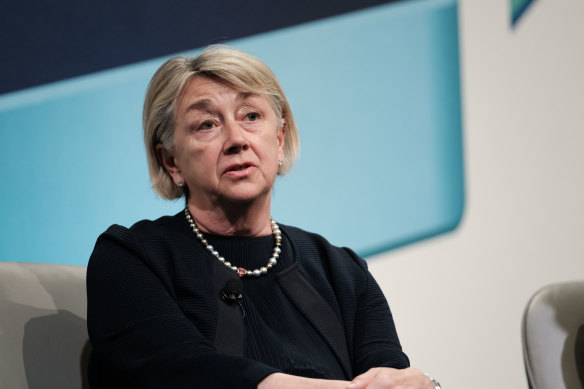
So, why is this boom attracting so much attention from the watchdogs?
Loading
A big concern is the lack of transparency. Although banks regularly report on their loan books and get crawled over by supervisors, we don’t know precisely how much money is sloshing around in private credit.
Likewise, while the market prices of listed shares change constantly as traders respond to new information, private assets may only be valued infrequently, and subjectively.
When a super fund invests in a private company, or lends money to one, there may be little public information about how those assets are performing, which raises the risk of these assets being written down suddenly when things change.
As the IMF has put it: “Valuation is infrequent, credit quality isn’t always clear or easy to assess, and it’s hard to understand how systemic risks may be building given the less than clear interconnections between private credit funds, private equity firms, commercial banks and investors.”
Loading
Events of the past week brought home some of these risks, and how they can affect super funds. Last week, The Australian Financial Review reported the country’s biggest super fund, AustralianSuper, had taken a $1.1 billion hit on equity investments and loans to an unlisted US education start-up.
The $1.1 billion hit needs to be seen in context of AustralianSuper’s $341 billion in assets under management, and the fund says it remains strongly committed to private equity, which has been the top-performing asset class over five and 10 years for the fund.
Even so, it’s also a reminder of why regulators appear concerned about the boom in private markets, including private credit.
And it’s not the only super fund that’s been putting more money into private credit. Other funds, including industry giants UniSuper and Australian Retirement Trust, have also said they have been or are planning to increase their exposure to this asset class.
There is nothing inherently wrong with that, but financial regulators are clearly watching the trend closely. Indeed, the Australian Prudential Regulation Authority (APRA) has been running the ruler over super funds’ processes for valuing unlisted assets such as private equity, infrastructure and credit.

APRA deputy chair Margaret Cole says banks, non-banks and super funds are all under scrutiny over their private credit activity.Credit: Oscar Colman
APRA deputy chair Margaret Cole last week said while super funds had made some private credit investments, these were “still seeking some level of safety rather than more speculative, niche areas of private finance, and the exposures they do have are low in terms of overall portfolio allocation”.
All the same, Cole also made it clear that APRA was still looking closely at the private markets boom for any possible spillover of risks into other parts of the financial sector.
“The interactions between all these participants, including banks, non-banks, and super funds, however, is opaque. This is a central driver for APRA moving towards cross-industry stress testing, to better explore any potential contagion sources and gaps in the regulatory framework,” she said.
Loading
Aside from these potential impacts on financial institutions, ASIC is also keen to make sure private markets have integrity: that booming private funds have proper governance, and that these markets deliver fair outcomes for end investors.
None of this is to say super funds shouldn’t be investing in private markets – clearly they are convinced the risks are worth the rewards for members. But regulators are right to be looking more closely at this opaque area that is attracting more cash from super funds, and the roughly 16 million members the sector represents.
Ross Gittins is on leave.









 Add Category
Add Category